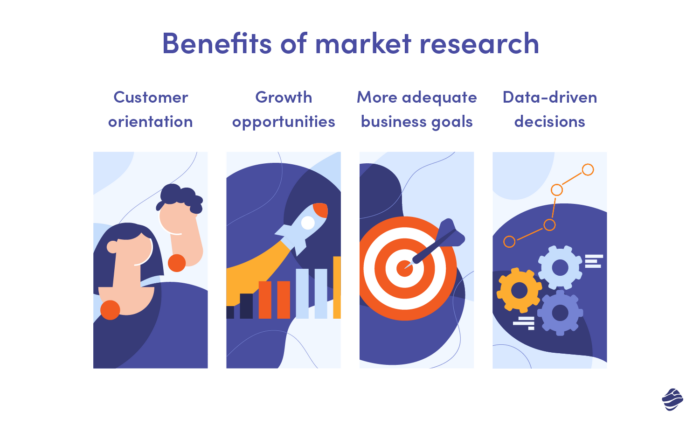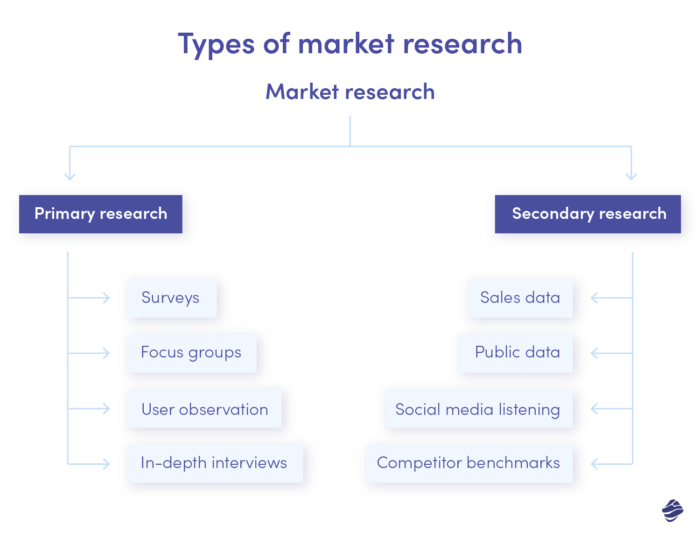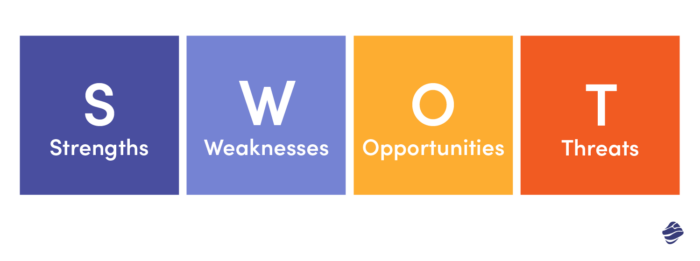Reach the right audience at the right place and time with the right product – these four ingredients form the perfect recipe for business success. Even though at first, it may seem like something super easy to achieve, in reality, it’s challenging to create a product that checks all the boxes.
Think about it for a second: if it were that simple, almost all start-ups and newly founded companies would conquer the market in an instant and stay on the top for decades. But still, 90% of them come off the playing field defeated in the first year. Obviously, there may be hundreds of explanations for why some companies fail to succeed. But the ugly truth is that in many cases, this happens because they were wrongly targeted and tried to get into the overcrowded market filled with similar, better-strategised products.
More often than not, the failure could have been avoided if the companies had done thorough market research at the very beginning of their business journeys.
But how should one go through it to take out the most of their analysis? To make your market research way more structured and effective, I’m sharing a list of the most successful methods and techniques to take a deep dive into your market and take away the correct insights. With their help, you will explore market needs, meet user expectations and identify your niche. All this to find your sweet spot on the market and gain a competitive advantage.
It’s time to learn how to base your project on solid foundations and fill the market gap with your product!
What exactly is market research?
Market research is all about gathering data on consumer behaviour, what they like and dislike, and how they interact with products and services. Think of it as a way to get inside your customers’ heads and determine their needs. With this knowledge, you can make informed decisions about how to grow your business and keep your customers satisfied.
At its core, market research focuses on understanding the needs and expectations of customers to create products that meet those needs. This requires a deep understanding of the target audience and their preferences and an awareness of the broader market and competitive landscape. By conducting thorough market research, businesses can gain insights into customer pain points and identify opportunities for innovation.
But it’s not just about the customers themselves. The market research also looks at the competition and analyses industry trends. You can stay ahead of the game by understanding what your competitors are doing and how the market is evolving.
Market research can significantly benefit small businesses trying to figure out how to reach and engage with their target audience without breaking the bank. You can maximise your efforts by knowing which marketing channels are most effective and how to communicate with your audience to get the best results.
Why is market research so important?
Before we jump to listing the most recommended market research methods and techniques, let’s stop here for a second and ask ourselves the most basic yet fundamental question: Do I really need to conduct market research?
The quick answer is this: YES, you should make it an integral part of your product ideation process.
But I’m sure you came here for something more than just short, quick answers, right? So let’s dig in a little deeper and learn how exactly your business can benefit from conducting in-depth market research:
- Customer-oriented approach: Thanks to market research, you gather valuable insights about your target audience, leading to a better understanding of their needs, expectations, and pain points. Simply put, you learn exactly what they need and how your product can improve their lives.
- More adequate business goals: During the market research process, you get actual data, so you don’t need to make plans in a vacuum. Instead, you get lots of data to back up your ideas and assumptions. This way, you can set feasible long-term business goals.
- Growth opportunities: Want to verify your product idea and discover whether it may potentially be a gold mine or a massive failure? Market research will give you the answers. Thanks to it, you avoid the risk of making hasty business decisions and investing your budget in a product that is bound to fail and won’t revolutionise the market.
- Well-informed data-driven decisions: When making impactful business decisions, trusting your gut feeling is never the right approach. Back up your choices by data instead. By following numbers, charts, and industry reports rather than your assumptions and personal beliefs, you have greater chances of making the right business decisions.

Primary vs secondary market research methods: What’s the difference?
There are two main types of market research methods for market analysis: primary and secondary research. The main difference between them comes down to who holds the data and conducts the research.
Simply put, in primary research, you look at the data gathered by yourself, your colleagues, or external partners hired to conduct research at your request. Primary research may include surveys, in-depth interviews, questionnaires, etc.
Secondary research, on the other hand, focuses on analysing the data published openly by third parties like other companies or public institutions. These include market reports and studies, competitor activities, and other commercial sources.

10 market research methods to consider
Ready to gather all the necessary information about the target market? That’s perfect! Here, I’m introducing some proven qualitative and quantitative research methods you should consider in your market research. Depending on your needs, choose at least some of them and start making data-driven and well-informed business decisions!
Let’s start with one of the most common and effective market research techniques.
Surveys typically consist of open-ended or close-ended (or a mix of both) questions sent to a group of respondents. The main goal of written surveys is to collect fundamental information about a specific topic or receive people’s feedback. Surveys are one of the most common methods of quantitative market research.
When conducting market research, you can use surveys to
- Measure brand awareness
- Set a pricing policy
- Market segmentation
- Check customer satisfaction
- Analyse brand loyalty
Why are surveys so powerful? You can easily reach a large sample size with them, giving you reliable and actionable insights and valuable insights.
Keep in mind that surveys don’t necessarily need to be an online form. In-person, e-mail or phone surveys can also be a great way to gather as much information as you need.
Want to back up your market research with even more qualitative data? Gather 6 to 9 carefully selected participants in one room and start a vibrant discussion with them.
In a focus group, you take on the role of a moderator and lead the discussion aimed at receiving people’s opinions, feedback, and personal observations. Depending on your goal, you can start a conversation about your brand communication, pricing, new products, or even soon-to-be-released advertisement campaigns.
What makes focus groups an excellent choice for market research? By choosing this qualitative research method, you can
- Get a wide range of opinions and different points of view, all at once
- Confront your assumptions and personal beliefs
- Clarify your notions
- Develop ideas you might not have even considered before
If you want to receive solid market insights and get a better understanding of your target group, then in-depth interviews (IDIs) will do their job perfectly.
This market research technique involves conducting a series of one-on-one interviews with purposely-selected interviewees, during which you discuss product-related topics. Importantly, you can conduct in-depth interviews not only with your target audience’s members but also with industry leaders, making it possible for you to get expert knowledge.
In this qualitative market research method, the approach to the respondent is more personal, allowing them to give more insightful and honest responses. By asking a series of open-ended questions, you can dig deeper instead of staying on the surface of the discussed issues.
IDIs are also often implemented in UX research. Check our list of 11 UX research methods and learn how to create a user-oriented product!
Collecting competitors’ benchmarks and analysing their activities also made it to the list of top market research methods. After all, to conquer the market, you need to know who you are competing against for the throne and who may potentially steal your audience.
So, take a closer look at the main activities of your primary and secondary competitors. Importantly, don’t limit gathering competitor benchmarks only to product analysis. You can also examine their multichannel marketing strategies (social media, SEO, ads, PR coverage, etc.) or compare their offerings, business models, and profits. All this is to discover their main weaknesses and strengths and how your product is positioned in the industry.
To make the competitive analysis a whole lot easier and more efficient, it’s a good idea to conduct a SWOT analysis.

This well-known strategic planning technique may help you align your business strategy and tech product to the market and review it in the context of 4 categories:
| Category | Questions |
|---|---|
| Strengths | What’s our unique value proposition? What skills do we have that competitors lack? What makes us stand out? What positive things do customers say about us? Is our brand well-known to the target audience? Is our capital strong? |
| Weaknesses | What should be improved? Are our actions or strategies outdated? Do we face any particular problems or difficulties? Are we struggling to reach the right audience? |
| Opportunities | Are there expansion opportunities? Can our audience expand? Can we take advantage of our competitors’ weaknesses? Can we use new tech advancements to improve our product? |
| Threats | Will market demand decrease over time? Can minor competitors grow in strength? Can political or social changes harm our business? |
Want to get the full picture of your current situation and identify other opportunities for growth? Take a careful look at your sales data and analyse it.
By checking your company’s sales data, you can:
- Get lots of quantitative data to analyse whether your marketing strategies bring the desired results and plan your spendings for further campaigns
- Identify customer trends
- Understand your target audience and their habits
However, keep in mind that analysing customer data brings the best results possible only when combined with other market research techniques.
This list wouldn’t be complete without user observation. After all, it is to users that you address all your efforts. So any opportunity to learn more about them can give you lots of actionable insights.
This primary market research method consists of analysing how target customers interact with your digital product in their natural environment and how they behave when making purchase decisions.
Importantly, analysed customers shouldn’t be aware that they are being observed. Otherwise, they won’t behave in a natural manner, which may consequently lead to making the wrong conclusions. Remember that in this market research method, you can observe how people interact with your competitors’ products as well. This can also give you vital hints for improving your product.
Sometimes valuable data may be available at your fingertips. You just need to know where to look for it. And the internet can be an ideal place to search for all sorts of data that may support your market research. What’s more, such data can be reused or even redistributed. Entirely for free!
And which types of public domain data may prove helpful for your market research process? All sorts of data, actually. When digging into the internet, it’s wise to look for:
- Industry reports
- Polls conducted by research centres
- Government databases
- Data catalogues
- Statistics portals
- And so much more…
You wouldn’t believe how much data is available to the public. So have a little poke around online (or in libraries) looking for some reports and publications published by well-respected educational institutions and research centers! Then, put this knowledge to good use in developing your business.
Social media are more powerful now than ever before which shouldn’t surprise anyone. However, not everyone knows that it can be used for business purposes and support market analysis.
How? You can, for instance, analyse user comments or posts on various platforms. Since people just love sharing their opinions on specific topics with others, you can make good use of it and check what exactly they’re saying about your product or company. What’s more, you have great social media monitoring tools (such as Brand24 or Sprout Social) at your disposal that will let you know each time someone mentions your brand or starts a vibrant discussion about your product.
All this makes social media an excellent tool for researchers who look for honest opinions and feedback. Since people are willing to take the time to share feedback about your weaknesses, you’ll find out exactly what needs improvement.
This method involves testing new products in a real-world setting to gain insight into how customers will react with them.
One of the most significant advantages of experiments and field trials is that they allow you to get direct feedback from customers. This feedback may help you to make improvements and adjustments before launching to a larger audience.
However, it’s essential to be cautious when conducting experiments and field trials. They can be time-consuming and expensive, so planning and executing them carefully is vital to ensure they provide valuable insights.
This method can be a great source of information, especially for companies introducing new products or services. It’s like taking a new product out for a spin before committing to it.
Purchasing data from a third-party source is outsourcing some of your market research to a team of experts. Market research firms and data providers collect and analyse data on consumer behaviour, market trends, and other essential factors that can help businesses make informed decisions.
One of the most significant advantages of purchasing data is that it can give you a broader perspective on the market. Instead of relying solely on your own market research, you can get a complete picture of industry trends and consumer behaviour.
How to conduct market research
So you already know what methods can be used in market research. Now it’s time to find out exactly how to conduct market research. Whether you’re a small business owner or a marketing professional, understanding the steps involved in market research can help you make better decisions and achieve success. So, let’s get started!
Step 1: Define the problem
The first step in any market research project is to define the problem or objective you want to solve. This sounds simple, but it’s one of the most critical steps in the process. Defining the problem will help you focus your research efforts and ensure you gather the correct data to inform your decisions.
To get started, ask yourself:
- What questions do I need to be answered?
- What information do I need to make an informed decision?
This will help you identify the specific problem or objective you want to tackle with your research.
For example, if you’re a business owner who wants to launch a new product, you might want to find out:
- What are the needs and preferences of my target audience?
- How can I position my product to stand out from competitors?
By clearly defining your research objectives, you’ll be better equipped to develop a research plan and choose the most appropriate research methods.
Step 2: Develop a research plan
Once you have clearly defined your problem or objective, the next step is to develop a research plan. This involves:
Deciding on the research methods to use
When developing your research plan, it’s essential to consider your target audience and the research objectives you defined in the previous step. Consider the data type you need to collect and the research methods that suit your needs. This could include surveys, focus groups, interviews, or secondary research, depending on the nature of your project.
Creating a timeline for the project
It’s also essential to set a realistic timeline for your research project. Consider how long each research method will take, and factor in time for data analysis and report writing. This will help you stay on track and ensure that you can meet any deadlines you may have.
Identifying the resources you will need
You don’t want to run out of time or rush to meet a deadline, so be sure to give yourself plenty of time for each step of the research process. You’ll also want to factor in time for analysing the data and creating a report. Assess your resources carefully and allocate them appropriately to ensure your research project succeeds.
So, grab a cup of coffee, and start mapping out your research plan. With a clear roadmap, you’ll be one step closer to achieving your research objectives and driving the success of your business.
Step 3: Collect and analyse data
When it comes to market research, collecting and analysing data is the key to understanding your customers.
First, you must choose the proper data collection methods for your research project. This could involve surveys, focus groups, or analysing existing data sources. Collecting the correct data from the right people is essential to get a clear picture of your target audience and their needs.
Once you’ve gathered your data, it’s time to dive in and analyse it. This part is essential to uncover insights and trends that inform your decision-making process. You’ll need to be systematic and thorough in your approach, avoiding biases or assumptions.
As you analyse your data, look for patterns and trends that emerge. These may point to areas where your business is performing well and areas where improvements could be made. It’s also important to pay attention to anomalies in the data, as these could provide unexpected insights.
Step 4: Draw conclusions and take actions
So at the end of the process, all you need to do is draw conclusions from your data and take action based on your findings. This may only sound easy, but it is where all your hard work pays off, as you can use the insights you’ve gained.
You’ll need to look for patterns, trends, and correlations to draw meaningful conclusions from your data. Use statistical analysis tools to help you make sense of the data and identify the most important findings.
Once you’ve drawn your conclusions, it’s time to take action. This could involve changing your products or services, adjusting your marketing strategies, or pivoting your business model.
In the end, it’s the most crucial part of market research. It’s where you’ll use your insights to make strategic decisions that will drive your business forward and give you a competitive edge. So take the time and be bold in taking action to achieve your business goals.
Build a better digital product supported by market research!
Market research is an integral part of developing a digital product strategy. What’s more, it should never be overlooked, especially at the product ideation stage. By conducting profound market research, you may gather lots of insightful data to help you make better decisions and, consequently, drive your business straight to success and stay ahead of your competitors.
Above, I have presented 10 of the most common primary and secondary market research methods. You don’t necessarily need to select all of them for your research. Choose the ones that may address your needs and give you the answers to the most pressing business challenges.
Looking for a reliable partner that will develop a goal-oriented strategy for your digital product? Go with Miquido – by conducting customised product strategy workshops, competitive analysis, and gathering market insights, our experts will ensure your idea is on the right track. It’s time to get fully prepared for your product launch!




